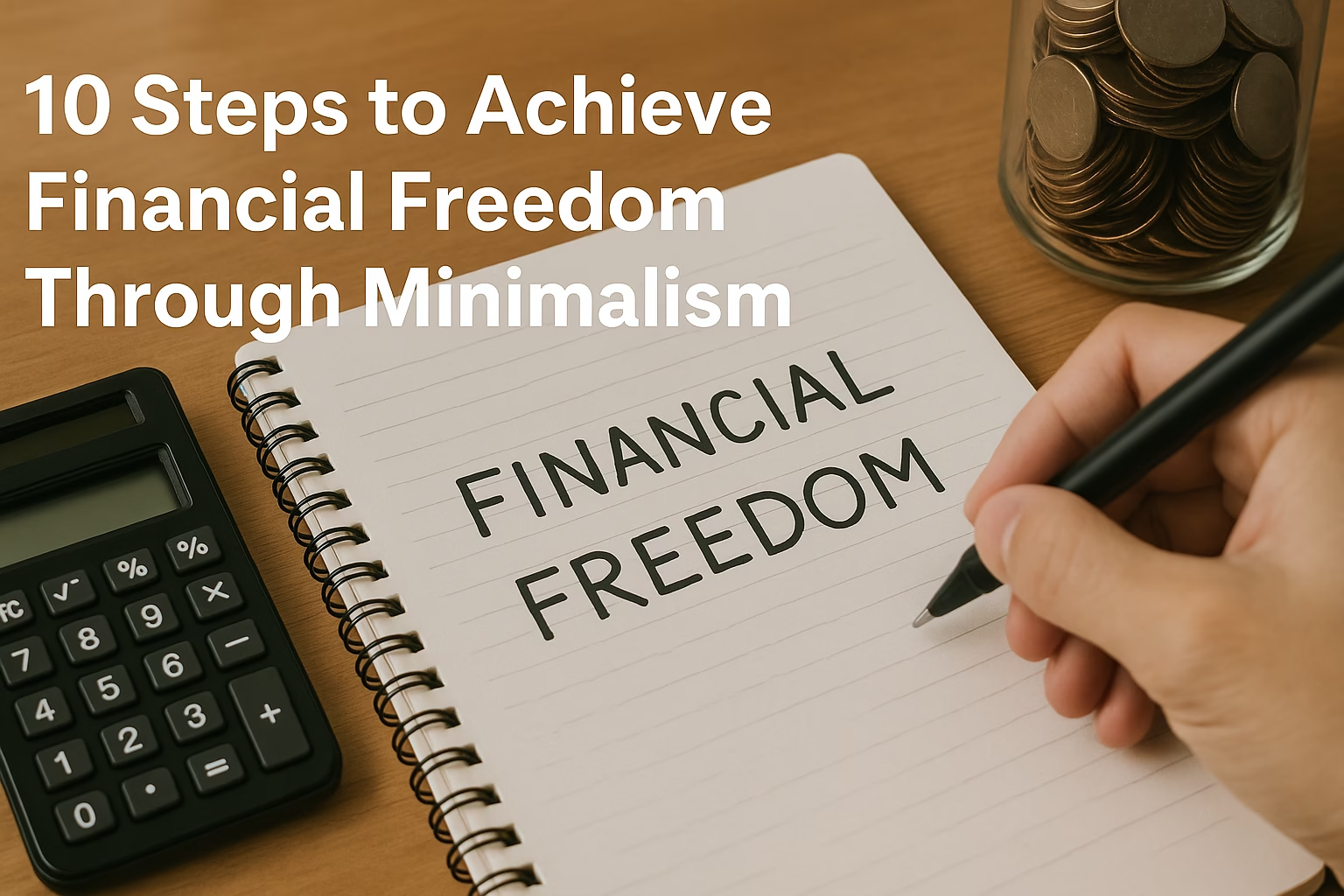Imagine waking up every morning without worrying about bills, debts, or keeping up with endless financial obligations. Financial freedom isn’t just about having a lot of money—it’s about having control, clarity, and peace of mind. And minimalism is one of the most powerful tools to help you get there.
Here’s a practical 10-step guide to achieving financial freedom by embracing a minimalist lifestyle.
1. Define What Financial Freedom Means to You
Financial freedom is different for everyone. For some, it means quitting a 9-to-5 job; for others, it’s about having no debts or being able to travel the world. Begin by asking:
-
What does financial freedom look like for me?
-
How much do I really need to feel secure and free?
-
What do I want more time, energy, or resources for?
Clarifying your goals is the foundation for the rest of the process.
2. Track Every Expense for 30 Days
To take control of your finances, you first need to know exactly where your money is going. For 30 days, track every cent—rent, food, impulse buys, subscriptions, etc.
You’ll likely be surprised by how much you spend on things that don’t align with your values. This awareness is key.
3. Declutter Your Budget Like You Declutter Your Closet
Just like a minimalist declutters their wardrobe, you can simplify your budget. Cut out:
-
Unused subscriptions
-
Extra services or luxuries you don’t value
-
Frequent small purchases that add up
Keep only what brings you utility, peace, or joy.
4. Create a “Minimalist Budget”
Design a budget that reflects your priorities. Focus on:
-
Needs (housing, food, essential bills)
-
Values (maybe saving for experiences or donations)
-
Goals (paying off debt or investing)
Minimalist budgets aren’t about punishment—they’re about purpose.
5. Shift from Impulsive to Intentional Spending
Before buying anything, ask:
-
Do I need this?
-
Will this bring long-term satisfaction?
-
Can I borrow or wait 24 hours before deciding?
You’ll quickly realize how often spending is emotional or habitual.
6. Pay Down Debts Strategically
Minimalism helps you eliminate excess—and debt is a major form of excess. Use strategies like:
-
Snowball method (start with smallest debts)
-
Avalanche method (focus on high-interest debts first)
As debts disappear, your mental clarity and financial breathing room increase.
7. Build a Simplicity Emergency Fund
Life throws surprises. A small emergency fund ($500 to $1,000) prevents you from falling back into debt when unexpected costs arise.
It’s also a symbol of freedom: knowing you can handle life’s curveballs.
8. Invest in What Matters Long-Term
A minimalist mindset encourages smart, long-term investing rather than short-term spending. Prioritize:
-
Retirement accounts
-
Index funds or ETFs
-
Education or skills that add value to your future
Let your money work for you, not against you.
9. Say No to Lifestyle Inflation
Got a raise or bonus? Congrats! But instead of upgrading your car or home, consider:
-
Paying off more debt
-
Increasing your savings rate
-
Taking more time off or working fewer hours
Minimalism teaches us that more income doesn’t have to mean more spending.
10. Redefine Wealth
True wealth isn’t in possessions—it’s in freedom, health, relationships, time, and peace. As you apply minimalist principles to your finances, you’ll naturally redefine what it means to be rich.
It’s not about having more. It’s about needing less and enjoying more.
What Simplicity and Minimalism Teach Us About Money
Minimalism and financial freedom go hand in hand. The less you need to maintain your lifestyle, the more power you gain over your time and choices.
By simplifying your financial life, you not only reduce stress—you open up space for joy, creativity, and true abundance.

